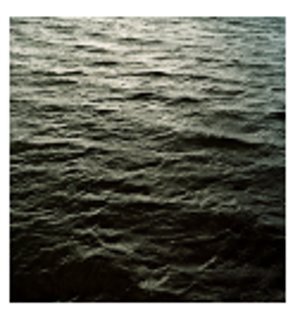Back to Tomorrow
dal 14/2/2013 al 25/5/2013
Segnalato da
Yvon Chabrowski
Dominique Gonzalez-Foerster
Wiebke Loeper
Inken Reinert
Anri Sala
Michaela Schweiger
Maya Schweizer
Heidi Stecker
Julia Schafer
14/2/2013
Back to Tomorrow
Museum of Contemporary Art, Leipzig
The exhibition shows works by Yvon Chabrowski, Dominique Gonzalez-Foerster, Wiebke Loeper, Inken Reinert, Anri Sala, Michaela Schweiger and Maya Schweizer. It combines construction and reconstruction, the fabrication of memory and the way in which it is outwardly presented.

Artists: Yvon Chabrowski (D), Dominique Gonzalez-Foerster (F), Wiebke Loeper (D), Inken Reinert (D), Anri Sala (AL, F), Michaela Schweiger (D), Maya Schweizer (D)
curated by Julia Schäfer and Heidi Stecker, GfZK
Exhibition design: Kay Bachmann and Philipp Paulsen
But what is memory? What do we remember, and why? How do we construct memory? How do we find our orientation within it and what after-effects does it have? How do we remember places and spaces? Do spaces store thoughts and memories, do they reflect and collect them, can they serve as triggers? Who allows which memories to exist? Which of them are appropriate? Memory is subject to censorship and self-censorship. Ideas and ideologies shape, use and control them. Memory is constructed; the articulation, themes and interpretations of memories are governed by fashion and go in waves. Memories have blank spaces and leave unpleasant things out.
The exhibition “Back to Tomorrow” shows works by Yvon Chabrowski, Dominique Gonzalez-Foerster, Wiebke Loeper, Inken Reinert, Anri Sala, Michaela Schweiger and Maya Schweizer. Yvon Chabrowski comments on her work: “In my work I dedicate myself to making mass media images tangible. I am interested in how they are outwardly presented, or the constructions upon which they are based.” Dominique Gonzalez-Foerster´s spatial installations consist of walk-in rooms in which biographical memories are interwoven with reminiscences from literature and films. Wiebke Loeper pursues topics like home and Identity combined with autobiographical references. Inken Reinert´s drawings and installations explore the heritage of socialist modernism. The artist recycles the past without giving rise to nostalgia. The video work “Byrek” of Anri Sala is characterised by ritual which the artist is evidently attempting to preserve: the daily task of preparing byrek. Here, personal recollections of family history overlap with the general difficulty of serving and passing on the traditions of one´s own heritage over space and time. In Michaela Schweiger´s films and installations, she is increasingly concerned with questions surrounding the conditions of architectural and urban space on the one hand, and the significance of medial spaces such as television, cinema and the internet on the other. Maya Schweizer deals with personal as well as social-historical questions about images and texts of the collective and personal memory.
“Back to Tomorrow” combines construction and reconstruction, the fabrication of memory and the way in which it is outwardly presented. The resource of memory results from the past, but it is also a reference point for experience and learning related to the future. Images, patterns and models form and produce recollections. There are classical forms of media associated with memories: they are recorded in diaries and collected. Estates hold memories. Recollections are linked with spaces, form them, change as memory fades, are replaced with models that seem to correspond with prevailing social discourses. But memory and remembering are also governed and influenced by physical, neurological, medical factors.
Thus the exhibition is concerned both with the media involved in storing and archiving recollections and with an artistic reflection on history, which can also be of a private, personal, familiar nature. In the works of artists, recollections based on individual experience unfold. They point towards the fleetingness and changeableness of memory or relate to the reconstruction and restructuring of memory spaces.
The exhibition design, developed by Kay Bachmann and Philipp Paulsen, follows a system, which works with codes and symbols for each work. Visitors are kindly invited to combine the symbols with their own memory and a brochure, which is given to every visitor, when entering the show.
The exhibition is supported by the Burg Giebichenstein Kunsthochschule Halle/Burg Giebichenstein, Art Academy Halle/Saale
and by the Kulturstiftung des Freistaates Sachsen
Press and communication
Heidi Stecker stecker@gfzk.de
Opening Friday 15.02.2013, 7 pm
Galerie für Zeitgenössische Kunst
Karl-Tauchnitz-Straße 9-11 D-04107 Leipzig



